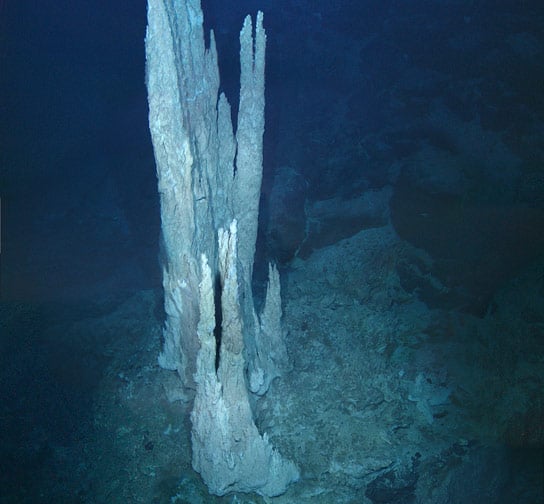
This image from the floor of the Atlantic Ocean shows a collection of limestone towers known as the “Lost City.” Alkaline hydrothermal vents of this type are suggested to be the birthplace of the first living organisms on the ancient Earth. Credit: D. Kelley and M. Elend/University of Washington
A new study describes how electrical energy naturally produced at the sea floor might have given rise to life, assembling decades of field, laboratory, and theoretical research into a grand, unified picture.
Life took root more than four billion years ago on our nascent Earth, a wetter and harsher place than now, bathed in sizzling ultraviolet rays. What started out as simple cells ultimately transformed into slime molds, frogs, elephants, humans, and the rest of our planet’s living kingdoms. How did it all begin?
A new study from researchers at NASA’s Jet Propulsion Laboratory in Pasadena, California, and the Icy Worlds team at NASA’s Astrobiology Institute, based at NASA’s Ames Research Center in Moffett Field, California, describes how electrical energy naturally produced at the sea floor might have given rise to life. While the scientists had already proposed this hypothesis – called “submarine alkaline hydrothermal emergence of life” – the new report assembles decades of field, laboratory, and theoretical research into a grand, unified picture.
According to the findings, which also can be thought of as the “water world” theory, life may have begun inside warm, gentle springs on the sea floor, at a time long ago when Earth’s oceans churned across the entire planet. This idea of hydrothermal vents as possible places for life’s origins was first proposed in 1980 by other researchers, who found them on the sea floor near Cabo San Lucas, Mexico. Called “black smokers,” those vents bubble with scalding hot, acidic fluids. In contrast, the vents in the new study — first hypothesized by scientist Michael Russell of JPL in 1989 — are gentler, cooler, and percolate with alkaline fluids. One such towering complex of these alkaline vents was found serendipitously in the North Atlantic Ocean in 2000, and dubbed the Lost City.
“Life takes advantage of unbalanced states on the planet, which may have been the case billions of years ago at the alkaline hydrothermal vents,” said Russell. “Life is the process that resolves these disequilibria.” Russell is the lead author of the new study, published in the April issue of the journal Astrobiology.
Other theories of life’s origins describe ponds, or “soups,” of chemicals, pockmarking Earth’s battered, rocky surface. In some of those chemical soup models, lightning or ultraviolet light is thought to have fueled life in the ponds.
The water world theory from Russell and his team says that the warm, alkaline hydrothermal vents maintained an unbalanced state with respect to the surrounding ancient, acidic ocean — one that could have provided so-called free energy to drive the emergence of life. In fact, the vents could have created two chemical imbalances. The first was a proton gradient, where protons — which are hydrogen ions — were concentrated more on the outside of the vent’s chimneys, also called mineral membranes. The proton gradient could have been tapped for energy — something our own bodies do all the time in cellular structures called mitochondria.
The second imbalance could have involved an electrical gradient between the hydrothermal fluids and the ocean. Billions of years ago, when Earth was young, its oceans were rich with carbon dioxide. When the carbon dioxide from the ocean and fuels from the vent – hydrogen and methane – met across the chimney wall, electrons may have been transferred. These reactions could have produced more complex carbon-containing, or organic compounds – essential ingredients of life as we know it. Like proton gradients, electron transfer processes occur regularly in mitochondria.
“Within these vents, we have a geological system that already does one aspect of what life does,” said Laurie Barge, second author of the study at JPL. “Life lives off proton gradients and the transfer of electrons.”
As is the case with all advanced life forms, enzymes are the key to making chemical reactions happen. In our ancient oceans, minerals may have acted like enzymes, interacting with chemicals swimming around and driving reactions. In the water world theory, two different types of mineral “engines” might have lined the walls of the chimney structures.
“These mineral engines may be compared to what’s in modern cars,” said Russell.
“They make life ‘go’ like the car engines by consuming fuel and expelling exhaust. DNA and RNA, on the other hand, are more like the car’s computers because they guide processes rather than make them happen.”
One of the tiny engines is thought to have used a mineral known as green rust, allowing it to take advantage of the proton gradient to produce a phosphate-containing molecule that stores energy. The other engine is thought to have depended on a rare metal called molybdenum. This metal also is at work in our bodies, in a variety of enzymes. It assists with the transfer of two electrons at a time rather than the usual one, which is useful in driving certain key chemical reactions.
“We call molybdenum the Douglas Adams element,” said Russell, explaining that the atomic number of molybdenum is 42, which also happens to be the answer to the “ultimate question of life, the universe, and everything” in Adams’ popular book, “The Hitchhiker’s Guide to the Galaxy.” Russell joked, “Forty-two may in fact be one answer to the ultimate question of life!”
The team’s origins of life theory applies not just to Earth but also to other wet, rocky worlds.
“Michael Russell’s theory originated 25 years ago and, in that time, JPL space missions have found strong evidence for liquid water oceans and rocky sea floors on Europa and Enceladus,” said Barge. “We have learned much about the history of water on Mars, and soon we may find Earth-like planets around faraway stars. By testing this origin-of-life hypothesis in the lab at JPL, we may explain how life might have arisen on these other places in our solar system or beyond, and also get an idea of how to look for it.”
For now, the ultimate question of whether the alkaline hydrothermal vents are the hatcheries of life remains unanswered. Russell says the necessary experiments are jaw-droppingly difficult to design and carry out, but decades later, these are problems he and his team are still happy to tackle.
Reference: “The Drive to Life on Wet and Icy Worlds” by Michael J. Russell, Laura M. Barge, Rohit Bhartia, Dylan Bocanegra, Paul J. Bracher, Elbert Branscomb, Richard Kidd, Shawn McGlynn, David H. Meier, Wolfgang Nitschke, Takazo Shibuya, Steve Vance, Lauren White and Isik Kanik, 15 April 2014, Astrobiology.
DOI: 10.1089/ast.2013.1110
The California Institute of Technology in Pasadena manages JPL for NASA.

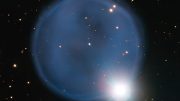


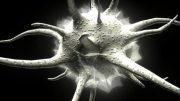
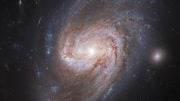

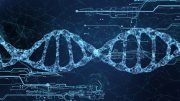

Calcium is an important element in life forming stages after organic, methane (CH4), CO2, Ammonia (NH3),and finally 20 amino acids. Similarly Phosphoros is another important element for life formation.If you enunciate from the periodic table H,He,Li,Be,B,C,N,O,F,Ne,Na,Mg,Al,Si,P,S,Cl,Ar,K,Ca, which are the first row of elements, that may occur in the crust are responsible for the first life formation, where Ca, and P play an important role. Thus the great Calciferous Age, kick-started the life formation and transformed the planet chemistry into planet biology. Other elements which were thrust on the crust like Fe ,Mn.. etc after a volcanic eruption or cometary impact resulted in modification of life beings into more developed and mobile animals culminating in evolution of the intelligent Man on any planet. Of course water is the neutral medium for formation of life anywhere in this cosmos. Thank You.
The vents create a proton gradient but how would that help the formation of life because in cells this is used exclusively for the production of ATP so how could this cause life ?
Calcium and Phosphorous make an important step in the formation of life because your ATP is nothing but stored energy in Adenosine Tri-phosphate which got the energy trapped in ADP which is Adenosine Di-Phosphate. The energy exists only in the form of electron flow whether it is Sodium -Potassium channels or calcium channels. The electron flow converts ADP to ATP, provided adequate Phosphorous is in the surroundings. The energy is released when it reverts back to Di-Phosphate by losing Phosphorous atom. In the entire universe, it is the display of energy and its storing which forms the evolution.We know that Sun’s energy is captured by photosynthesis where water is the proton donor. This energy is used to synthesize carbohydrates only from the available CO2, H2O etc in the surroundings, WHY? even your DNA the principle molecule of life requires a backbone of Phosphate to link A,C,T,G and U the principal amino acids of life. Even these principal amino acids are structurally built from C, H, N, and O of the surroundings. Thus the enormous energy in cosmos make the miracle of synthesizing many chemical molecules to store and release energy and also to enable them to polymerise further by coupling with one another. Man is also a huge polymer of hydrocarbon as far as chemistry is concerned. The only riddle is the molecular knowledge for all these to rule the environment in getting proper chemicals and they are just like valency of atoms combining one with the other by the deficit of electrons in their orbits. Thus everywhere electron plays the GOD in Chemistry, Physics and it extends to Biology. Electron is nothing but the smallest currency of the energy of BIG BANG which formed the universe. By the by a subtle knowledge also got disseminated, atomised and imbibed in every element of the Universe for the construction of Planets or Life beings. Thank You.